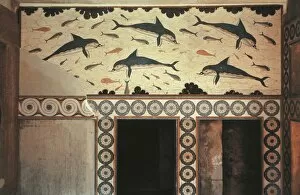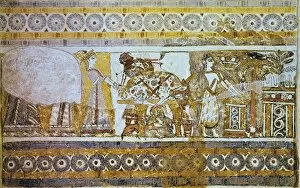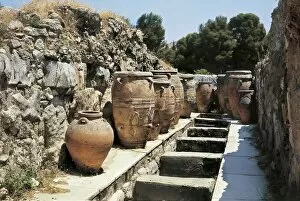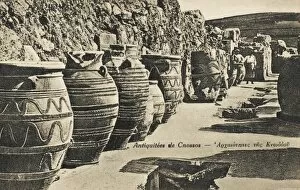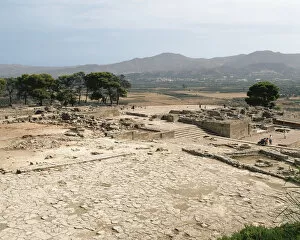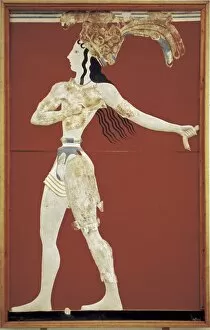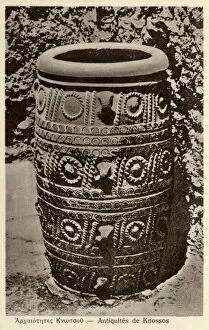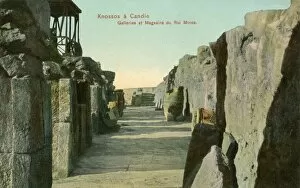Minoans Collection (page 3)
The Minoans, an ancient civilization that thrived in the Bronze Age, left behind a rich legacy of art and artifacts
For sale as Licensed Images
Choose your image, Select your licence and Download the media
The Minoans, an ancient civilization that thrived in the Bronze Age, left behind a rich legacy of art and artifacts. One such artifact is the enigmatic Phaistos Disc, dating back to the 15th century BC in Greece. Covered with mysterious symbols, it continues to puzzle researchers today. Minoan art showcases their vibrant culture and skilled craftsmanship. The acrobat depicted in their artwork demonstrates their fascination with athleticism and grace. Another painting from Acrotiri in Thera reveals their prowess as traders, showcasing Minoan ships sailing across the seas. Amongst their artistic creations is the famous "Dolphin Fresco, " which adorned walls or floors with its intricate design. Dolphins were revered by the Minoans for symbolizing protection and freedom. The Palace of Minos at Knossos stands as a testament to their advanced architectural skills. Built around 2100 BC, this grand structure boasted impressive halls and intricate columns that showcased their mastery over construction techniques. Hagia Triada Sarcophagus provides insight into Minoan burial practices during ca. 1450-1400 BC. Elaborately decorated, it depicts scenes of daily life and religious rituals. Zakros Palace's ruins offer a glimpse into another significant Minoan site around 1700-1650 BC through captivating photography capturing its grandeur even after centuries of decay. The "Ladies in blue" fresco captivates viewers with its elegant depiction of women dressed in vibrant blue attire - a reflection of Minoan fashion trends during that era. Knossos' archaeological site reveals fascinating details about this ancient civilization's history. A column from the Hall of Double Axes exemplifies both structural strength and artistic finesse prevalent throughout Minoa's architecture. Another intriguing artifact is the disc of Phaistos - an intricately carved clay disk covered with hieroglyphic-like symbols whose meaning remains a mystery to this day.

